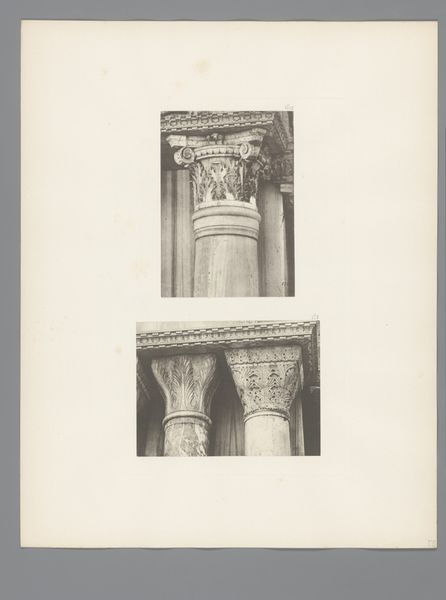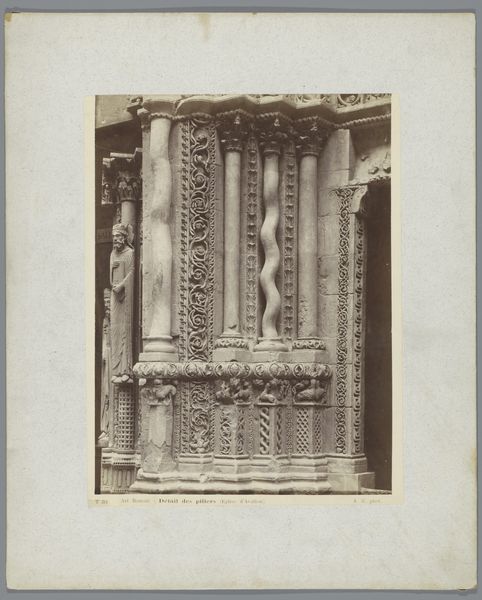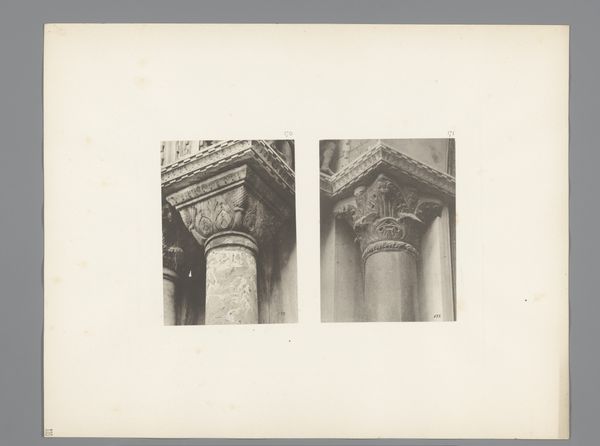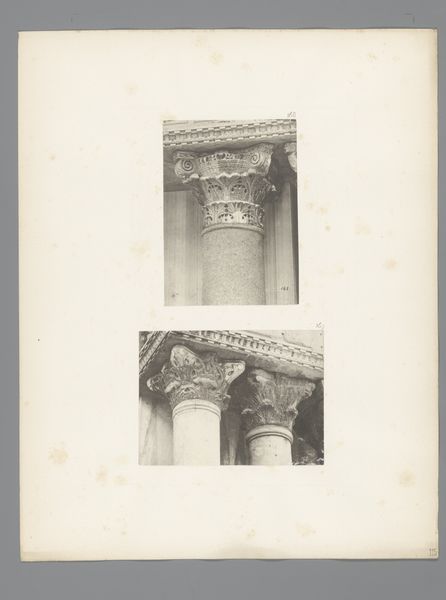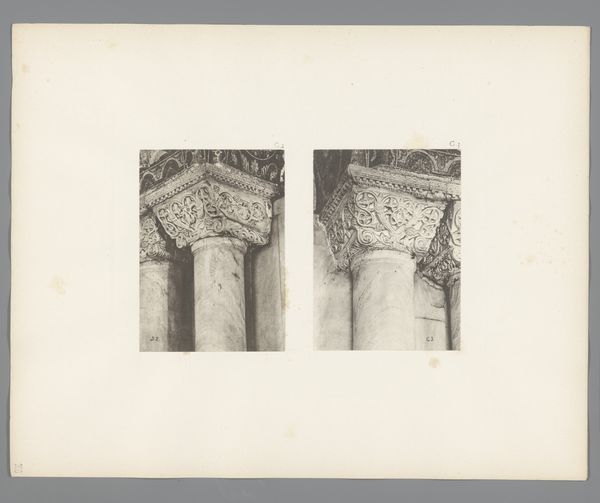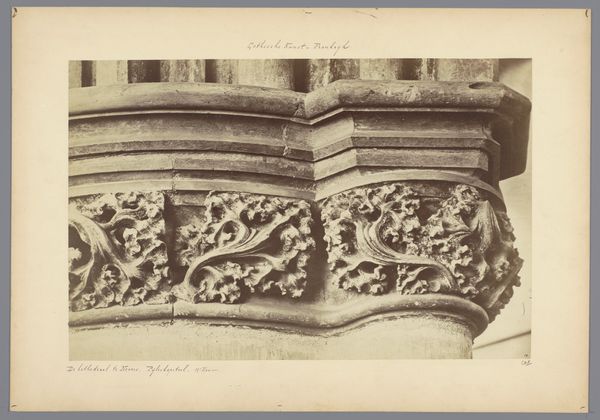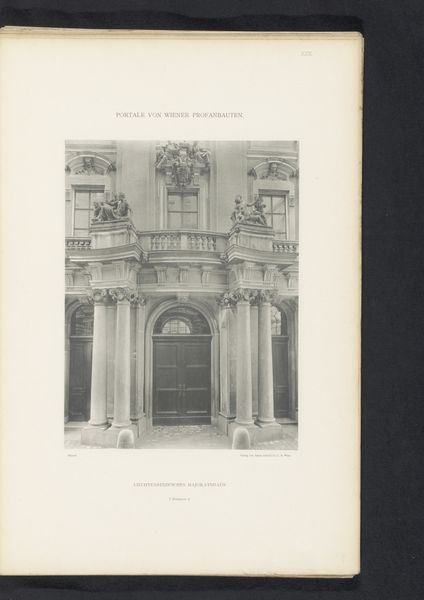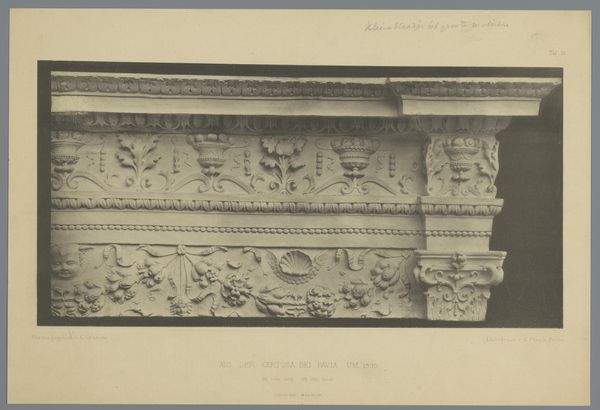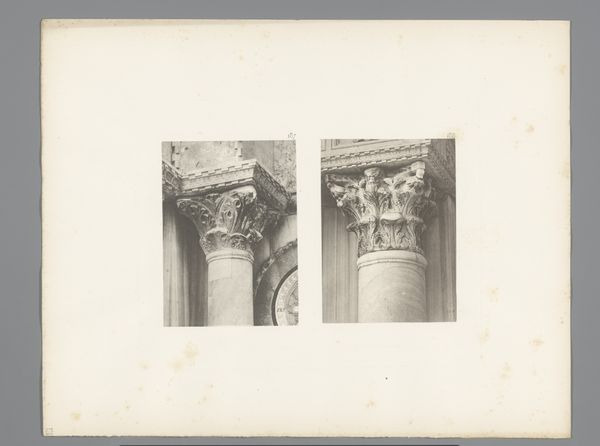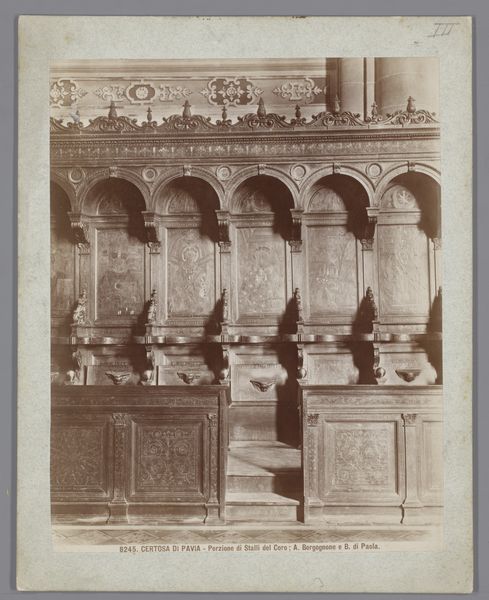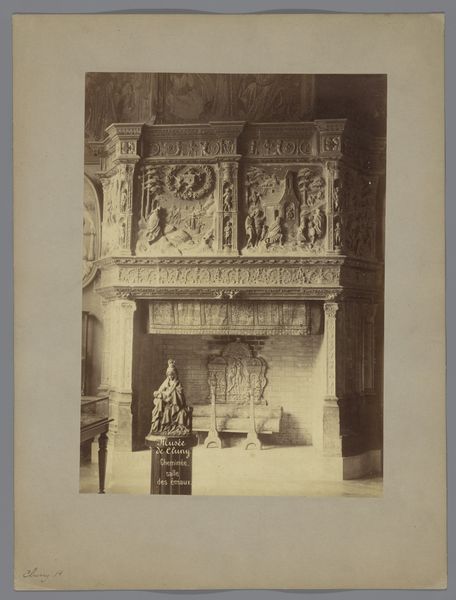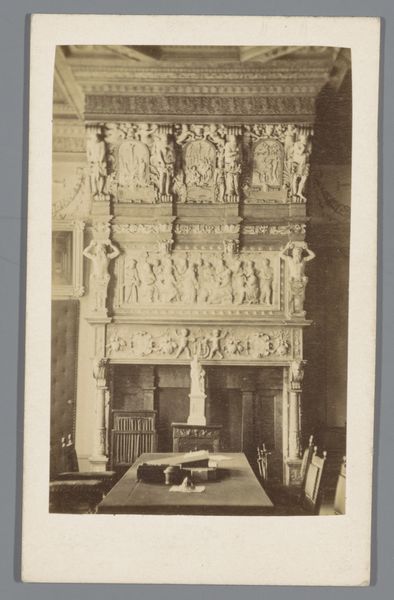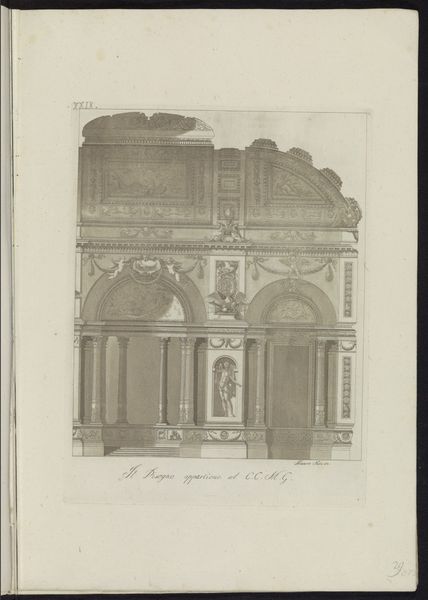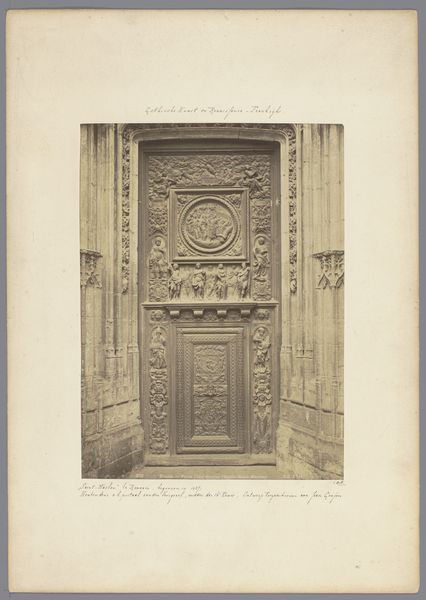
print, photography, architecture
# print
#
greek-and-roman-art
#
landscape
#
photography
#
geometric
#
ancient-mediterranean
#
column
#
architecture
Dimensions: height 259 mm, width 206 mm
Copyright: Rijks Museum: Open Domain
Editor: Here we have a photograph from sometime between 1875 and 1900, "Deel van de Porte Jean Goujon van het Louvre te Parijs" by J. Kuhn. It depicts a section of intricately carved stonework. I’m struck by the level of detail, especially considering it’s captured in a photograph. What draws your eye to this piece? Curator: The first thing I notice is the process of reproduction itself. Photography in this era was complex. What labor and material went into capturing this architectural detail? The print transforms the stone—a material of immense physical presence, quarried, shaped, and placed through considerable effort—into an image, reproducible and therefore consumable. Editor: That's interesting. So, you’re thinking about how photography democratizes art? Curator: In a sense, yes. But it’s also about understanding the social implications of that process. Who is commissioning these photos? Who is consuming them, and what does that say about access to art and culture at the time? We have this beautiful sculpted entrance to the Louvre—historically the domain of royalty—made accessible through a relatively new technology. It speaks to power and social structures. How does the image participate in those structures, too? What did the manual labor cost? And was this photo intended as art in and of itself? Editor: I hadn’t considered it that way. So much thought goes into the social elements involved with such pieces of artwork. Curator: Exactly! Examining the intersection of labor, materials, and social context gives us a richer understanding. Editor: Thank you for sharing. It really adds a new layer of meaning to the work. Curator: My pleasure. Considering the processes involved really helps appreciate and even question historical artistic expression.
Comments
No comments
Be the first to comment and join the conversation on the ultimate creative platform.
